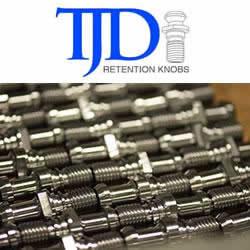Several different types of electric motors have been developed to address the needs of various manufacturing processes. Lets examine some of the most common types of electric motors and their strengths within the industry.
Which Motor Is Right for Your Manufacturing Process?
Megan Ray Nichols | Schooled by Science
When you hear the word "motor," you probably think of the combustion engines found in cars and other vehicles. But motors of many different types are all around us. They play a vital role in the manufacturing sector and even in our daily lives. Something as simple as a household appliance could rely on a basic electric motor.
Several different types of electric motors have been developed to address the needs of various manufacturing processes. Let’s examine some of the most common types of electric motors and their strengths within the industry.
Variable-Frequency Drives
When your application requires control over the speed and torque of an AC motor, a variable-frequency drive (VFD) may be the right choice. The primary advantage of this type of drive is that it saves energy compared to alternatives that cannot adjust to output needs as efficiently.
Pumps, compressors, conveyor belts or machining equipment where the output must be varied are examples of typical VFD applications. While the efficiency wins are big with these innovative drives, they have not yet achieved the market penetration of more widely used drives, such as servos.
Electric Servos
Even if you don’t work in the manufacturing sector, you've probably encountered the term "servo" at some point. These little guys have been around since World War II.
Servos use brushless electric motors and are effective in applications where speeds of over 2,000 RPMs are required. Servo motors can take subtle inputs from computer sensors and controllers, which makes them perfect for precision tasks, like CNC machining, or as part of a sub-assembly process on a mechanized production line.
Stepper Motors
In applications that don’t require high RPMs, a stepper motor might be the most cost-effective way to get the job done. These typically small and straightforward brushless motors are ideal for processes that require repeatable steps because of their ability to output at any number of various speeds. You can find these types of motors in hard disk drives, plotters and camera equipment.
Stepper motors offer excellent low-speed torque and can control the speed of their output shaft in exact steps. They do lose some ground to DC motors when it comes to energy consumption, which is why they are favored in smaller applications. More advanced designs tend to outperform steppers in high-speed torque and they can run hot.
DC Motors
Direct current (DC) motors are competitive with their servo cousins in their ability to produce high-RPM torque. However, they are not limited by angle and are therefore simpler. DC motors are controlled using pulsed power and will spin until the power is cut. They are common in simple applications like computer fans and for powering your favorite radio-controlled car.
These are some of the simplest electric motors you will find. As a result, they’re cheap and are best suited for basic manufacturing applications. DC motors can provide relatively high torque and are available in larger sizes compared to other electric motors. This is primarily because of their use in industrial applications where their low cost outweighs the need for the precision of a stepper or servo.
Other Electric Motors
Examples of more advanced variants of these four types of electric motors can be found in any number of very specific industrial applications. For example, vector drives allow for a VFD motor to run with nearly infinitely variable speed.
While electric motors have been a part of the industry for almost a century, they are developing more quickly than ever. Advances in electric motor design, next-generation sensor technology and the Internet of Things are sure to deliver newer and even more innovative motors to the manufacturing world.
The content & opinions in this article are the author’s and do not necessarily represent the views of ManufacturingTomorrow
Comments (0)
This post does not have any comments. Be the first to leave a comment below.
Featured Product

